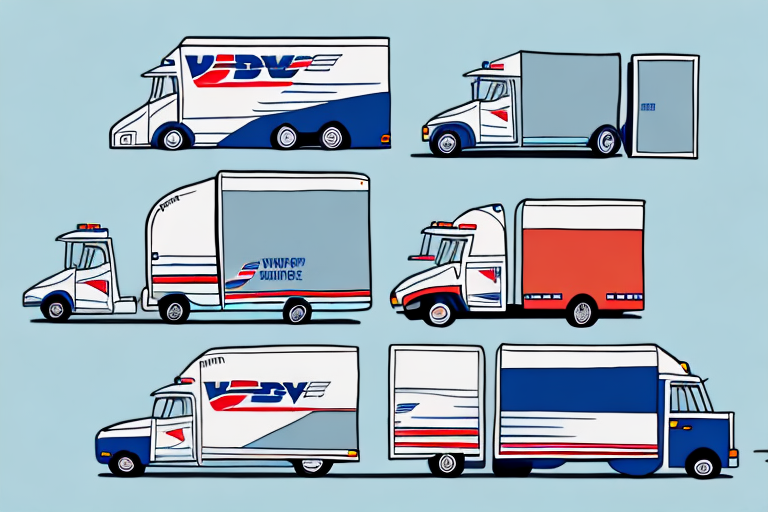Comparing the Best Shipping Rates: USPS vs. UPS
Shipping is a critical component for any business dealing with physical products. Selecting the right shipping carrier can significantly impact your operational efficiency and customer satisfaction. Two of the most popular options are USPS and UPS. While both carriers offer a variety of packages and services, they differ in several key areas. This comprehensive comparison provides detailed insights to help you make an informed decision tailored to your business needs.
Understanding the Differences between USPS and UPS
USPS (United States Postal Service) is a government-run shipping carrier with a history spanning over two centuries. It provides a range of delivery options, including First-Class Mail, Priority Mail, and Priority Mail Express. In contrast, UPS (United Parcel Service) is a private shipping giant founded in 1907, offering ground, air, and international shipping services.
One significant difference lies in their pricing structures. USPS generally offers lower rates for smaller packages and residential shipments, making it a cost-effective choice for small businesses and individual sellers. According to the 2023 UPS Shipping Guide, UPS tends to be more economical for larger packages and commercial addresses. Additionally, USPS boasts an extensive network of post offices and drop-off locations, enhancing accessibility for users. Conversely, UPS provides advanced tracking features, signature confirmations, and options like same-day delivery, catering to businesses needing more robust delivery solutions.
How to Choose the Right Shipping Carrier for Your Business
Choosing between USPS and UPS hinges on your business's specific requirements. Consider the following factors:
- Cost Efficiency: USPS is typically more affordable for domestic shipping, especially for smaller packages.
- Delivery Speed: UPS offers expedited services, including next-day and two-day delivery, which are ideal for time-sensitive shipments.
- International Shipping: UPS has a more extensive global network, making it a better option for international deliveries.
- Package Size and Weight: UPS is often more cost-effective for bulkier or heavier items.
- Tracking and Insurance: UPS provides more comprehensive tracking and higher insurance coverage, beneficial for valuable items.
Evaluating these factors against your business needs will guide you in selecting the most suitable carrier. Additionally, reviewing each carrier's delivery reliability and customer service quality through reputable sources can further inform your decision.
Examining the Shipping Options Offered by USPS and UPS
Both USPS and UPS provide a variety of shipping options tailored to different needs:
- USPS:
- First-Class Mail: Ideal for lightweight packages, typically delivered within 1-3 business days.
- Priority Mail: Offers expedited shipping for packages up to 70 pounds, with delivery in 1-3 business days.
- Priority Mail Express: Provides overnight delivery nationwide for urgent shipments.
- Flat-Rate Shipping: Cost-effective option for heavier items, regardless of weight within specified limits.
- UPS:
- UPS Ground: Suitable for heavy packages that do not require expedited delivery, typically delivered within 1-5 business days.
- UPS Air: Includes options like UPS Next Day Air and UPS 2nd Day Air for faster deliveries.
- International Shipping: Comprehensive global shipping solutions with various delivery speeds and customs handling.
- Freight Services: Handles large, bulk shipments with specialized logistics support.
When selecting a shipping option, consider the nature of your shipment, delivery timeframe, and budget constraints. For instance, USPS's flat-rate boxes can significantly reduce costs for heavier items, while UPS's air services are advantageous for rapid, time-sensitive deliveries.
Analyzing the Pricing Structures of USPS and UPS
The pricing models of USPS and UPS differ primarily based on package dimensions, weight, distance, and delivery speed:
- USPS Pricing: Based on weight and distance, with additional flat-rate options offering fixed prices for certain package sizes. For example, a Priority Mail package under 70 pounds starts at $8.70, according to the USPS 2023 Pricing Guide.
- UPS Pricing: Calculated based on package weight, dimensions, destination, and selected delivery speed. A UPS Ground shipment for a 10-pound package across 500 miles may cost approximately $12, as per the UPS 2023 Service Guide.
While USPS often presents lower rates for smaller shipments, UPS offers competitive pricing for bulk and expedited services. It's essential to compare specific rates based on your average shipment profiles to determine the most cost-effective carrier for your business.
A Comprehensive Look at the Delivery Times of USPS and UPS
Delivery times are a crucial factor in carrier selection. Here's a breakdown:
- USPS:
- First-Class Mail: 1-3 business days.
- Priority Mail: 1-3 business days.
- Priority Mail Express: Overnight delivery.
- UPS:
- UPS Ground: 1-5 business days.
- UPS 3 Day Select: 3 business days.
- UPS 2nd Day Air: 2 business days.
- UPS Next Day Air: Next business day.
External factors such as weather, holidays, and high shipment volumes (especially during peak seasons like the holidays) can affect delivery times. Both carriers provide tools to estimate delivery times and track potential delays, ensuring you can plan accordingly.
Factors to Consider When Deciding Between USPS and UPS
Several key factors influence the choice between USPS and UPS:
- Type of Product: Fragile or high-value items may benefit from UPS’s superior insurance and tracking options.
- Delivery Timeframe: Urgent shipments are better served by UPS’s expedited services.
- Budget: Cost-sensitive businesses might prefer USPS for its competitive rates on smaller and domestic shipments.
- Shipment Volume: High-volume shippers may leverage UPS’s business accounts for volume discounts.
- International Reach: UPS offers a more robust international shipping infrastructure compared to USPS.
Additionally, consider the destination of your packages. UPS’s extensive global network and experience with customs procedures make it a strong candidate for international shipping, whereas USPS is often more cost-effective for domestic deliveries.
Comparing the Insurance Offered by USPS and UPS
Insurance is vital for protecting valuable shipments. Here's how USPS and UPS compare:
- USPS:
- Priority Mail: Up to $50 of insurance coverage.
- First-Class Mail: Up to $100 of insurance coverage.
- Additional Insurance: Available for an extra fee.
- UPS:
- Ground Shipments: Basic coverage of $100.
- Air Shipments: Coverage up to $1,000.
- Additional Coverage: Available at additional charges, offering higher protection for valuable items.
Both carriers have specific exclusions, such as fragile or perishable items, which may require additional insurance or alternative shipping methods. Evaluating the insurance claims process is also crucial:
- USPS: Claims can be filed online or in person at a post office. Documentation and proof of value are required.
- UPS: Claims are filed online, and UPS may inspect the package contents prior to approval, potentially delaying the process.
For high-value shipments, UPS’s higher coverage limits and streamlined claims process may offer greater peace of mind.
Evaluating the Tracking Capabilities of USPS and UPS
Effective tracking enhances transparency and customer satisfaction. Here's how USPS and UPS stack up:
- USPS:
- Basic Tracking: Available for most services, providing updates on package status and location.
- Notifications: Delivery alerts and notifications for successful deliveries.
- Limitations: Tracking updates may be less frequent compared to UPS.
- UPS:
- Enhanced Tracking: Real-time updates, including exact location and delivery status.
- Multiple Package Tracking: Manage and track multiple shipments simultaneously.
- Cost: Some advanced tracking features may incur additional fees.
While both carriers provide essential tracking services, UPS offers more detailed and frequent updates, which can be critical for monitoring high-value or time-sensitive shipments. USPS's tracking is sufficient for standard shipments but may lack the granularity needed for certain business requirements.
The Pros and Cons of Using USPS vs. UPS for Shipping
Understanding the advantages and disadvantages of each carrier can guide your decision:
- USPS:
- Pros: Affordable rates for small and domestic shipments, extensive network of drop-off locations, flat-rate shipping options.
- Cons: Limited international shipping options, less comprehensive tracking, slower for larger or international packages.
- UPS:
- Pros: Extensive international network, advanced tracking and insurance options, diverse range of shipping services including expedited and freight.
- Cons: Higher costs for small or domestic packages, additional fees for enhanced services.
Customer Service Comparison: USPS vs. UPS
Effective customer service is essential for resolving shipping issues promptly:
- USPS: Offers customer support via phone and online resources. However, being a government entity, response times can be slower, and resolving complex issues may take longer.
- UPS: Provides a broader range of support options, including phone, email, and live chat. Their dedicated customer service teams are known for quicker response times and more personalized support.
For businesses that rely heavily on timely support and efficient issue resolution, UPS’s customer service infrastructure may offer significant advantages.
How to Save Money on Shipping with USPS or UPS
Optimizing your shipping strategy can lead to substantial cost savings:
- Package Size and Weight: Utilize USPS’s flat-rate boxes for heavier items to save on shipping costs. Conversely, optimize package dimensions to fit UPS’s pricing tiers effectively.
- Shipping Volume Discounts: Both USPS and UPS offer discounts for high-volume shippers. Enroll in business accounts to access negotiated rates and bulk shipping discounts.
- Delivery Speed: Choose standard delivery options when possible to avoid premium charges associated with expedited services.
- Packaging Efficiency: Use lightweight and compact packaging to minimize dimensional weight charges, particularly with UPS.
- Leverage Online Tools: Utilize online shipping platforms and carrier-specific tools to compare rates, print labels at discounted prices, and manage shipments efficiently.
Implementing these strategies can help reduce shipping expenses, enhancing your business’s profitability.
The Impact of Shipping Carrier Choice on Your Business
The choice of shipping carrier has far-reaching implications for your business:
- Customer Satisfaction: Reliable and timely deliveries enhance customer trust and repeat business.
- Operational Efficiency: Efficient shipping processes streamline operations, reducing delays and errors.
- Cost Management: Optimizing shipping costs directly affects your profit margins.
- Brand Reputation: Consistent and quality shipping experiences contribute positively to your brand image.
Carefully selecting the right carrier aligns your shipping strategy with your business goals, fostering growth and customer loyalty.
Real-World Experiences: Comparing Shipping with USPS vs. UPS
Insights from other business owners can provide practical perspectives:
- Small E-commerce Stores: Many prefer USPS for its affordability and flat-rate options, especially for lightweight products.
- Large Enterprises: Often lean towards UPS for its robust international shipping capabilities and advanced tracking systems.
- Retailers with High-Value Items: Favor UPS for enhanced insurance and secure delivery options.
Engaging with online forums and business communities, such as the ShipScience Business Forums, can reveal common challenges and best practices when using USPS and UPS, helping you avoid potential pitfalls.
Conclusion: Which Shipping Carrier is Right for You?
Ultimately, the decision between USPS and UPS depends on your business’s unique needs:
- Choose USPS if:
- You primarily ship small, domestic packages.
- You seek cost-effective shipping solutions.
- You value a wide network of drop-off locations.
- Choose UPS if:
- You require expedited or international shipping.
- You need advanced tracking and higher insurance coverage.
- You handle larger or high-value shipments.
Evaluate each carrier's features, pricing structures, and services against your business requirements to determine the best fit. Utilizing a combination of both carriers for different shipment types can also be an effective strategy to balance cost and service quality.




















